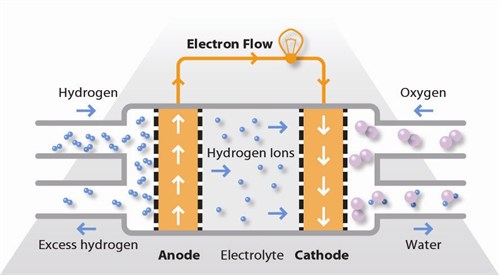Edexcel A level
Chemistry (2017)
Topic 14: Redox
(II) Redox titration calculations
Here are the two
learning objectives:
14/18. To be able
to carry out both structured and non-structured titration calculations
including Fe2+/MnO4−, and I2/S2O32−
14/19. To be able
to understand the methods used in redox titrations
Redox Titrations
Two
examples of redox titrations are required for the Edexcel course. You can see from the learning objectives the
two redox reactions required are those between manganate(VII) and iron(II) and
between iodine and thiosulphate.
How to carry out these two redox
titrations: methodology
Redox
titrations rely on following changes in the redox reaction chemistry to
determine the titration end point.
1. The Manganate(VII)/iron(II)
titration
In a
manganate(VII)—iron(II) titration, the purple manganate(VII) solution is added
to the almost colourless iron(II) solution so that at the end point the
iron(II) solution is slightly pink from the manganate(VII).
It is
easier to follow a change from colourless to pink than it is a colour change
from pink to colourless which would happen if the iron(II) solution was added
to a solution of pink manganate(VII) ions.
No
indicator is needed because the purple manganate(VII) is self indicating.
2. The Iodine/thiosulphate
titration
In the
case of the iodine—thiosulphate titration, an indicator is required since the
end point is not easy to see. In this
titration, you usually add sodium thiosulphate solution from the burette to an
aqueous solution of iodine in the conical flask. Aqueous solutions of iodine are brown but
fade to yellow then colourless at the end point so to follow the colour change
and serve a sharp end point is impossible.
Instead
starch solution is added to the iodine solution once it becomes golden coloured
(see the video below). This results in a
deep blue–black starch–iodine complex.
Adding thiosulphate solution brings an endpoint with a sudden loss of
the blue–black colour: a very sharp endpoint.
You can
watch a very brief iodine
thiosulphate titration here.
Calculations using redox titration
results.
I’m going
to talk you through a non-structured calculation on the reasonable assumption
that if you can carry out these kinds of calculation then the structured
calculations you will find fairly straightforward.
Here is a
typical non–structured calculation question:
Iron(II)ethanedioate
dihydrate can be analysed by titration using potassium manganate(VII) in acidic
solution.
In this
reaction, manganate(VII) ions oxidise iron(II) ions and ethanedioate ions.
A 1.381g sample of impure FeC2O4.2H2O
was dissolved in an excess of dilute sulphuric acid and made up to 250ml of
solution.
25ml of this solution decolourised
22.35ml of a 0.0193 mol.dm–3 solution of potassium manganate(VII).
Use the
half-equations given below to calculate the reacting ratio of moles of
manganate(VII) ions to moles of iron(II) ethanedioate.
MnO4— + 8H+ + 5e— ⟶ Mn2+ + 4H2O
Fe2+ ⟶ Fe3+ + e—
C2O42— ⟶ 2CO2 + 2e—
Then calculate the percentage by
mass of FeC2O4.2H2O in the original impure
sample.
First, calculate
the reacting molar ratio:
Each
iron(II) ion provides one electron on oxidation and each ethandioate ion
provides two electrons: a total of three moles of electrons per
iron(II)ethandioate.
5 moles
iron(II)ethandioate provide 15 electrons and these reduce three moles
manganate(VII) ions.
So the
overall equation has to be:
5FeC2O4
+ 3MnO4— + 24H+ ⟶ 3Mn2+ + 10CO2 + 5Fe3+
+ 12H2O
Now you
have the reacting ratio of manganate(VII) to iron(II)ethandioate as 3 moles to
5 moles.
Second,
you calculate the moles of manganate(VII) actually used in the titration and
work back from this value.
Use n=cV
Moles MnO4— =
0.0193 × 22.35/1000 =
0.00043 moles
Third
calculate the number of moles of the iron(II) salt in the 25ml of its solution:
Moles FeC2O4 =
0.00043 × 5/3 =
0.00072 moles
Fourth,
note that 25ml sample was a tenth of the total sample dissolved in the 250ml
volumetric flask. Therefore:
Total
moles FeC2O4 =
0.0072moles
Fifth,
calculate the molar mass of the iron(II) salt:
Fe— 55.8
C—12 ×
2 = 24
O—16 ×
4 = 64 +
H2O—18 × 2= 36
Giving a
total Mr (FeC2O4 ) of 179.8 g.mol—1
Sixth,
calculate the mass of pure iron(II) salt using mass = molar mass ×
moles
Mass of FeC2O4
= 179.8
× 0.0072 = 1.295g
Lastly,
calculate the percentage by mass of the pure iron(II) salt since
%
purity = pure mass
× 100 /total mass
%
purity = 1.295
× 100/1.391 = 93.2%
And there
you have it. Step by step you can work
through the calculation and see that the stages are common to most types of
calculation like this one.















